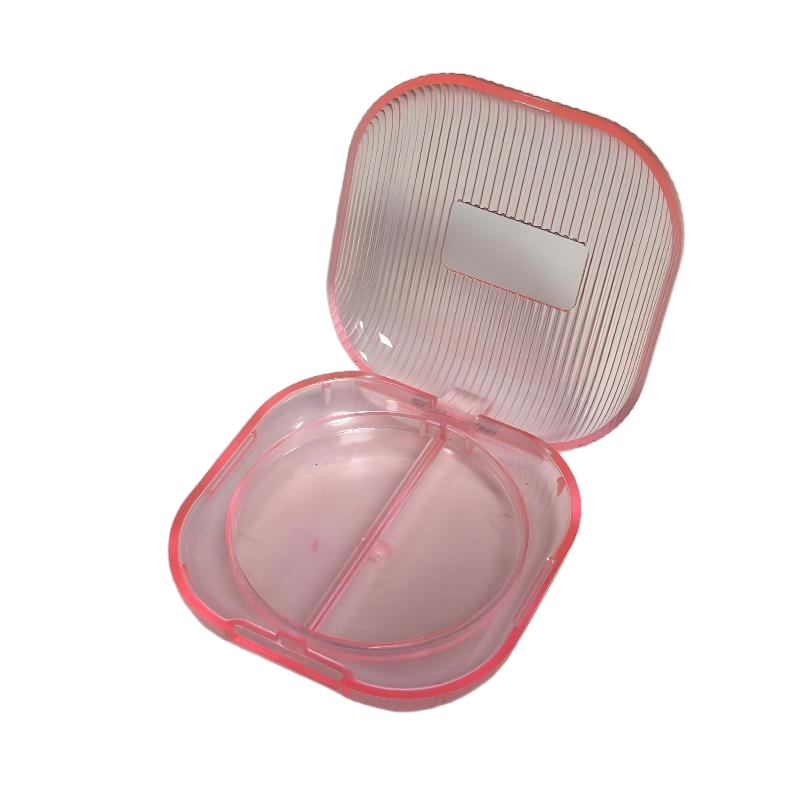
Pressed powder cases are an essential component of many makeup products. They not only protect the cosmetic product but also contribute to the overall user experience. When choosing or designing pressed powder cases, manufacturers consider materials that provide durability, aesthetic appeal, and functionality.
1. Plastic Materials
Plastic is one of the widely used materials for pressed powder cases. Thermoplastics such as polypropylene (PP) and acrylonitrile butadiene styrene (ABS) are popular choices due to their lightweight, durability, and moldability. These plastics can be easily shaped into various designs, allowing manufacturers to create cases with compact shapes, secure closures, and smooth surfaces. Plastic cases can also be produced in different colors and finishes, which makes them suitable for branding and product differentiation.
2. Metal Components
Some pressed powder cases incorporate metal elements, either as the main material or as accents. Aluminum and tinplate are commonly used metals that provide a premium feel and enhance durability. Metal cases are resistant to breakage and can be decorated with embossing, printing, or coating techniques. While they are heavier than plastic cases, metals add a sense of quality and luxury, which appeals to consumers looking for high-end cosmetic packaging.
3. Glass Elements
Glass is less common but sometimes used in pressed powder cases, especially for the base or cover inserts. Glass offers transparency, giving consumers a clear view of the product inside. It is also resistant to scratches and chemical reactions with cosmetics, making it a practical choice for certain formulations. However, glass is fragile and heavier than plastic or metal, so it is often combined with other materials for structural support.
4. Paper and Cardboard Options
Eco-friendly trends have led some brands to explore paper or cardboard for pressed powder cases. These materials are lightweight, biodegradable, and suitable for printing. To ensure durability, paper or cardboard cases are often reinforced with coatings or laminated layers. While less durable than plastic or metal, they provide a sustainable option for brands seeking to reduce environmental impact. Pressed powder cases made from paper can also include inserts or protective layers to maintain the product's shape and prevent breakage.
5. Hybrid Materials
Many pressed powder cases use a combination of materials to balance durability, aesthetics, and cost. For example, a case might have a plastic base with a metal lid or a cardboard exterior with a plastic inner tray. Hybrid designs allow manufacturers to enhance the visual appeal and tactile experience while keeping production costs manageable. Combining materials also provides flexibility for branding, decoration, and functional features such as mirrors or compartmentalized storage.
6. Considerations for Material Selection
When selecting materials for pressed powder cases, manufacturers consider factors such as weight, durability, cost, recyclability, and consumer appeal. The material must protect the pressed powder from cracking or contamination while being comfortable to carry and use. A well-chosen material also contributes to the product's market positioning, whether it is a luxury item with metal accents or an eco-friendly option with cardboard packaging.
Pressed powder cases can be made from a variety of materials, including plastics, metals, glass, paper, or combinations of these. Each material offers distinct advantages in terms of durability, design flexibility, and consumer appeal. By carefully selecting and combining materials, manufacturers create cases that not only protect the product but also enhance the overall user experience. Understanding these material choices helps brands and consumers appreciate the thought and design behind everyday cosmetic packaging.



 English
English  中文简体
中文简体  عربى
عربى  Español
Español 


